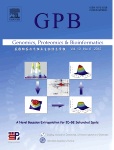 Khan W.A., Chisholm R., Tadayyon S., Subasinghe A., Norton P., Samarabandu J., Johnston L.J., Knoll J.H., Rogan P.K. Relating Centromeric Topography in Fixed Human Chromosomes to α-Satellite DNA and CENP-B Distribution. Cytogenetics and Genome Research, 2013 (DOI: 10.1159/000348744).
Khan W.A., Chisholm R., Tadayyon S., Subasinghe A., Norton P., Samarabandu J., Johnston L.J., Knoll J.H., Rogan P.K. Relating Centromeric Topography in Fixed Human Chromosomes to α-Satellite DNA and CENP-B Distribution. Cytogenetics and Genome Research, 2013 (DOI: 10.1159/000348744).
Abstract
Despite extensive analyses on the centromere and its associated proteins, detailed studies of centromeric DNA structure have provided limited information about its topography in condensed chromatin. We have developed a method with correlative fluorescence light microscopy and atomic force microscopy that investigates the physical and structural organization of α-satellite DNA sequences in the context of its associated protein, CENP-B, on human metaphase chromosome topography. Comparison of centromeric DNA and protein distribution patterns in fixed homologous chromosomes indicates that CENP-B and α-satellite DNA are distributed distinctly from one another and relative to observed centromeric ridge topography. Our approach facilitates correlated studies of multiple chromatin components comprising higher-order structures of human metaphase chromosomes.

